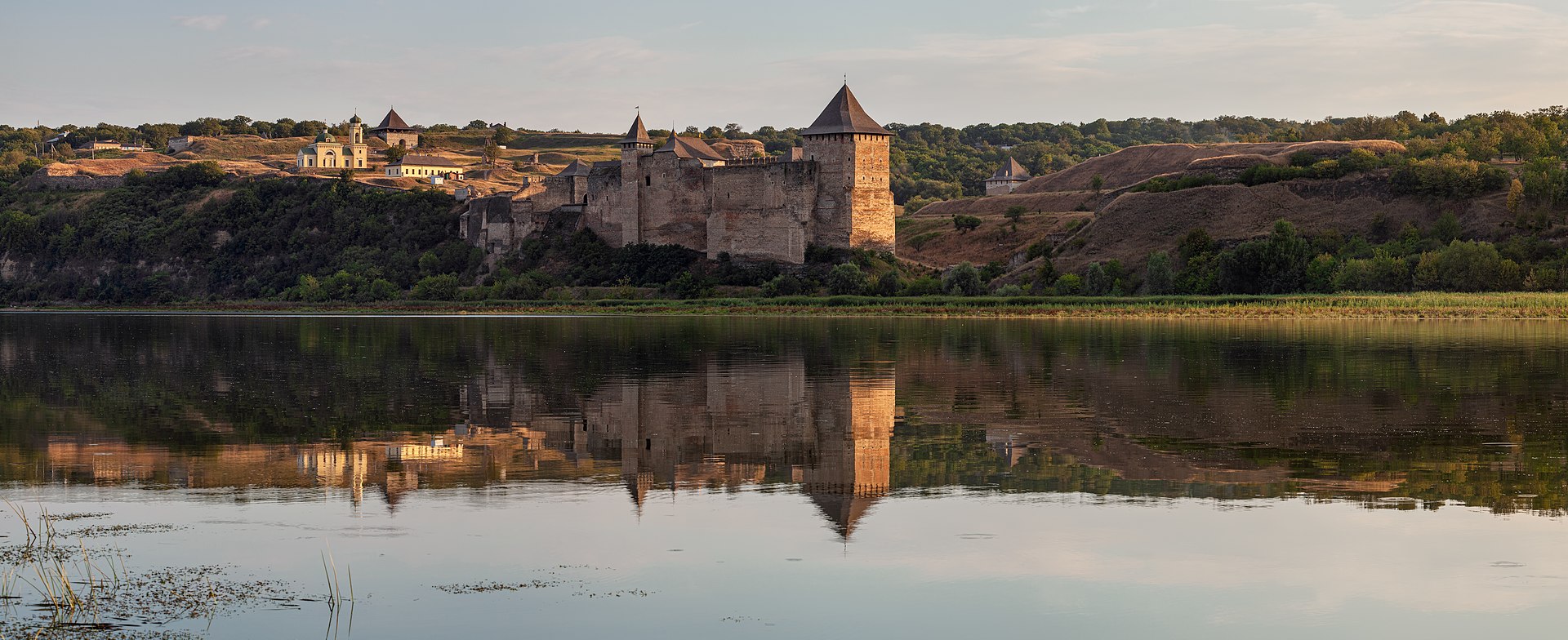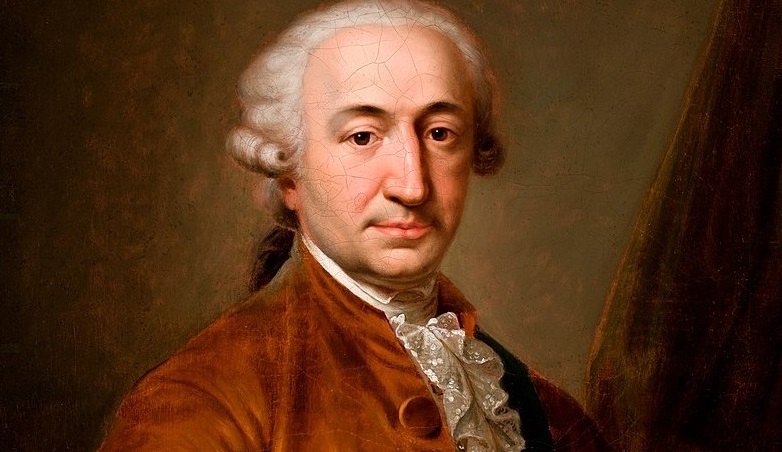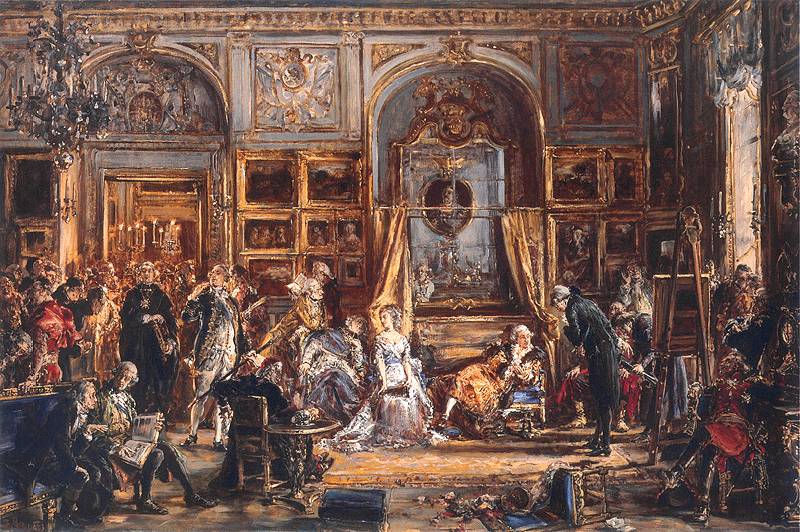Polish-Turkish relations in the modern era are primarily seen through the prism of the conflicts that the Polish-Lithuanian Commonwealth had with the Ottoman Empire over several hundred years. Many works have been written on this subject, whose authors have discussed military campaigns, territorial changes, the economic consequences of war, as well as diplomatic relations in the context of what is known as geopolitics and their influence on the position of both states on the European arena.
by Adam Perłakowski
On the other hand, we know much less about the everyday life of people from the Polish-Turkish borderland of the modern era, living in a turbulent and politically unstable area (in case of a military conflict, the area would primarily become an arena for war), but simultaneously constituting an unusual cultural, religious, and ethnic mix. It was inhabited both by Christians (Catholics, Greek Catholics, Orthodox, and adherents of the Armenian Church), and followers of non-Christian monotheistic religions: Islam and Judaism. Separate languages and traditions, however, were not an obstacle to mutual relations between people from the Polish-Turkish borderland. One might even risk a claim that it provided the opportunity for the interpenetration of various cultures, for the people living in this area to create – perhaps not so much tolerance in today’s meaning of the word as acceptance – patterns of free behaviour in one another’s company, good neighbourliness in short.
An example perfectly documenting this phenomenon is the edition of correspondence between the Turkish governor of the border fortress of Khotyn, Iliaş Colceag (Ilyas Kolchak) and the Polish nobility from the period 1730–1739, prepared by two historians: Mariusz Kaczka and Dariusz Kołodziejczyk.

Dariusz Kołodziejczyk is a researcher affiliated with the University of Warsaw, an outstanding expert on Polish-Turkish relations in the modern era, and the author of many publications and source books in English and Turkish. Mariusz Kaczka, on the other hand, is a representative of the younger generation of historians, who has already published numerous scientific works. Their cooperation has resulted in one of the most interesting editions in recent years, documenting a little-known period in the history of Polish-Turkish relations.
At first glance, one might think that this is one of many source publications. The publishers adopted a traditional method of editing, consisting of an introduction and annotated letters, supplemented by short biographies of Iliaş Colceag’s correspondents, a glossary of Old Polish terms and measures, as well as indexes. The advantage of the introduction, however, is that, apart from discussing the historical context and the person and career of the addressee of the letters, much space is devoted to the subject matter of the letters themselves. It turns out that the nobility did not shy away from either ‘big politics’ or problems typical of border areas (absconding, desertion, border violations, granting permission to enter a foreign territory), as well as minor matters: shopping during fairs and markets organised on both sides of the border.
The authors adopted the principles used by most currently publishing historian-editors, codified by the Cracovian historian Kazimierz Lepszy in the mid-20th century. However, they did not adhere to these principles; they attempted to adapt them to contemporary editorial requirements. That is why they managed to preserve the specificity and beauty of the Old Polish language, among other things. They also adopted the principle of translating macaronicisms into Polish, which is important in popularising the edition among a wide audience.
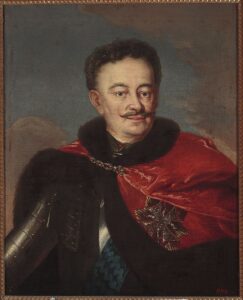
The provenance of the correspondence used in the edition varies. A considerable part comes from the resources kept at the Archive of Foreign Policy of the Russian Empire (Архив внешней политики Российской имперйи) in Moscow, from the fonds marked Archive of Bashaw Kolchak. Extremely valuable also are the materials that have been obtained from the resources of the V. V. Tarnovskyi Chernihiv Regional History Museum (Чернігівський історичний музей імені В.В. Тарновського), where a manuscript entitled The Book of Letters from the Polish Noblemen to the Bashaw of Khotyn was and still is stored. Single items of the correspondence (copies) also come from the Saxon Central State Archive in Dresden (Sächsisches Hauptstaatsarchiv Dresden). Mariusz Kaczka and Dariusz Kołodziejczyk have meticulously discussed the provenance of both (Moscow and Chernihiv) fonds and the history of changes within them as well.
The subject of this edition is the 337 letters sent to Colceag, as well as his replies to those he received. In addition, D. Kołodziejczyk and M. Kaczka included six letters from what is known as the Chernihiv manuscript (Annex No 1), as well as twelve letters published in the correspondence of Józef Potocki by Tomasz Ciesielski (registers),[1] and four letters from the Dresden archive in the form of copies that were translated from German into Polish. The letters are listed in chronological order.
The publication was meticulously executed, on glossy paper, owing to which the illustrations are very legible, which is especially true of the photographs of the correspondence sent to Iliaş Colceag.
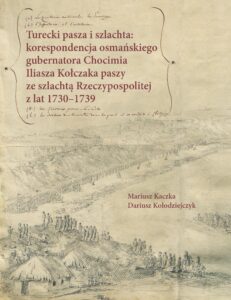
Title: A Turkish bashaw and the nobility: correspondence between the Ottoman governor of Khotyn Bashaw Iliaş Colceag (Ilyas Kolchak) with the nobility of the Polish-Lithuanian Commonwealth from the years 1730–1739
Publisher: POLONIKA The National Institute of Polish Heritage Abroad
This edition of his correspondence is an important scientific achievement. It fills an acute gap in sources relating to the history of the Polish-Turkish borderland in the 1730s. The authors of this edition have carried out the thorough research of the sources, and have given the final shape to a publication that should become compulsory reading for every historian of the modern era, not only those dealing with the Polish-Turkish borderland.
[1] Korespondencja hetmana wielkiego koronnego Józefa Potockiego. Rok 1739 [Correspondence of Józef Potocki, Great Hetman of the Crown. The Year 1739], elaboration, introduction and preparation for print by T. Ciesielski, Warsaw 2019.
Author: Prof. Adam Perłakowski
Translation: Alicja Rose & Jessica Sirotin

